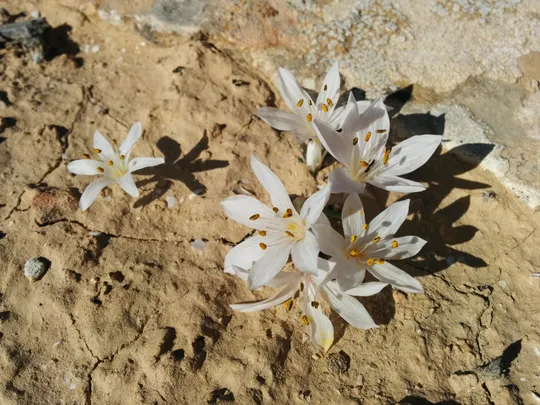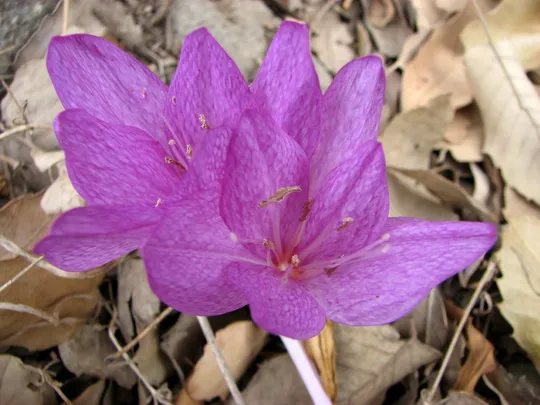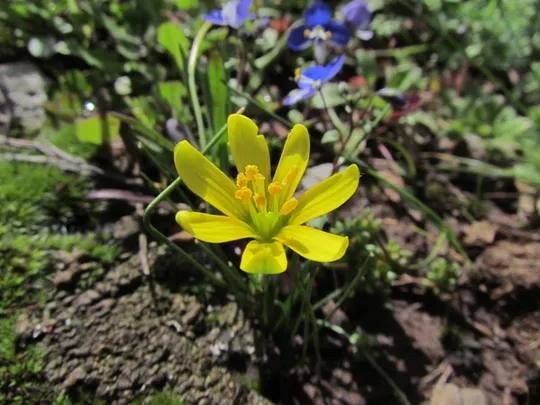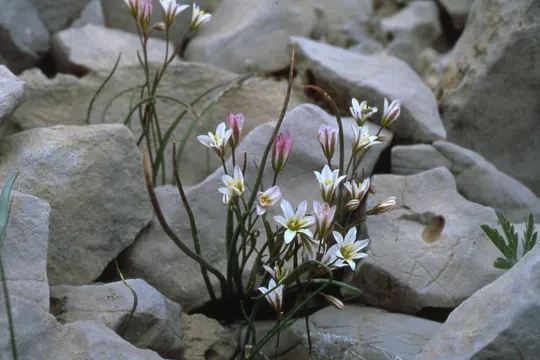Jordanian Meadow Saffron
Colchicum szovitsii
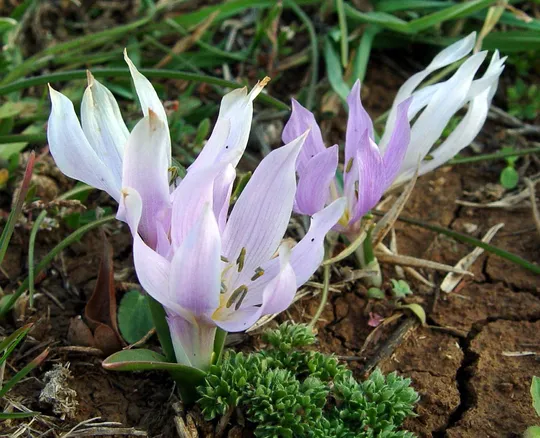
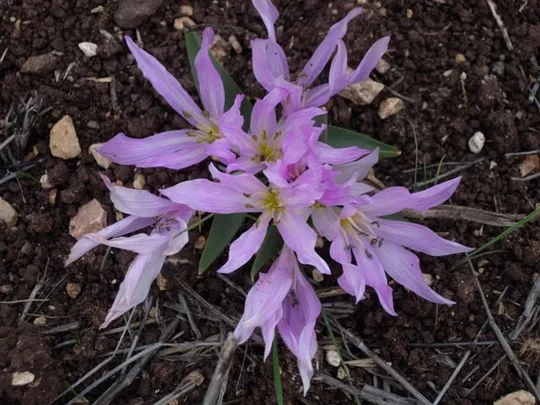
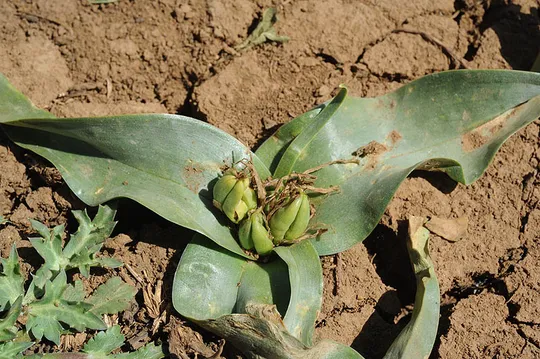
Colchicum szovitsii ssp. brachyphyllum
grows in the northern Golan Heights, eastern Upper Galilee and
on the Hermon, at 11 documented sites, but there may be 14 sites. In the Upper Galilee,
it grows on four sites on the Dalton Plateau and its edges, although it has
disappeared from part of this area. In the northern Golan Heights, it is found in
the Waset area and at the foot of the Bashanit Ridge. In the lower Hermon it is
known from the Mount Keta springs and from the Man Valley (outside the scope of
this book), on terra rossa and grumosol soils, on limestone, at an altitude of
1450 m. The Man Valley population is very large.
In Israel Colchicum
szovitsii ssp. brachyphyllum grows on heavy basalt soils
in periodically winter flooded depressions. In the Hermon, it is found at
altitudes of 960-1600 meters in seasonally flooded montane valleys, which dry
up and crack in summer. Globally the species is characteristic of moist clayish
soil and montane areas at altitudes of (900) 1600-3600 meters, where the snow melts
quickly, at the edges of streams and moist depressions.
For the genus – see Colchicum feinbruniae.
C. brachyphyllum was considered an independent species until 2007, but
following the work of Persson (2007) its status was reduced to that of a subspecies,
C. szovitsii ssp. brachyphyllum (Boiss. & Hausskn.) within the broad species. (See
also Feinbrun, 1953 and Mathew, 1987.) This change also led to a change in the
definition of the geographic distribution of the taxon, from a limited area in
the Levant (which gives a value of 2 in the endemism criteria) – to that of a broadly
distributed species. C. brachyphyllum is
close to C. fasciculare, which is endemic
to Syria, where, according to the literature is common in the Hauran. This
species typically has a large number of
leaves (5-9) that during flowering reach
a length of 10-25 cm and a width of 4
cm; the number of flowers is very large, usually 10-25. Plants identified with
this taxon were found at the Bar’on Pond (Bab el-Hawa) near Merom Golan and in seasonal
winter pools on Mount Hermonit and Mount Varda in the northern Golan Heights. C.
fasciculare does not grow in Turkey nor has any thorough
taxonomic study been conducted on it, therefore it is not clear whether it should
have the status of an independent species. Most species of C. brachyphyllum in Israel have four leaves and sometimes five or
six, and it is possible that C. fasciculare
is only a multi-flowered and leaved variety of C. brachyphyllum.
·
Colchicum szovitsii ssp. brachyphyllum grows only at very few sites in two regions
and on Mount Hermon.
·
The spatial distribution model of C. szovitsii ssp. brachyphyllum is of densely populated patches. The
sites on the Dalton Plateau are adjacent to each other, but those on the Golan
Heights are relatively distant.
·
Most sites, particularly those on the Dalton Plateau in the Upper Galilee and in Tel Rasanya
in the Golan are threatened by agricultural development. Because the sites in
the Dalton Plateau are close together and easily
accessible, there is concern that they will all be damaged at the same time as
a result of development processes. Moreover, the plant is prominent and
conspicuous during the flowering season and is threatened by bulb uprooting.
·
As all the Colchicaceae species, C. szovitsii ssp. brachyphyllum is protected by law by virtue of
being a geophyte. Tel Rasanya (in the Bashanit Ridge) and Bar’on Pond in the
Golan Heights are located in nature reserves, but the Dalton Plateau sites are not located in
a declared nature reserve.
·
The local subspecies is globally endangered as its range
is only an estimated 30,000 square kilometers, of which the part in Israel is
estimated at less than 200 square kilometers. The “broad“species is relatively
common in the world and probably not globally endangered.
A long-term
annual monitoring system should be established on at least two Colchicum
szovitsii ssp. brachyphyllum sites in each region to ensure that their population
is protected. A significant area in the Dalton Heights, which includes C.
szovitsii ssp. brachyphyllum populations and other rare species, should be
declared a nature reserve and development there should be prevented.
Colchicum szovitsii ssp. brachyphyllum
has a broad distribution that includes the Balkans (Bulgaria),
the Caucasus, Turkey, Iran, Turkmenistan and northern Iraq. The subspecies that
grows in Israel is found from southern Turkey, Syria, and Lebanon to northern
Israel and northern Jordan.
Colchicum szovitsii ssp. brachyphyllum is a rare geophyte that grows in the
eastern Galilee, in the Golan Heights and on the Hermon at a small number of
sites. Israel is its southern distribution limit. Some of the sites are adjacent
and intended for agricultural development, which may lead to local extinctions
of C. szovitsii ssp. brachyphyllum. Most of the sites are not located in nature
reserves and action should be taken to include them within declared nature
reserves.
ראה רשימת הספרות הכללית
Current Occupancy Map
| 1000 squre meter pixel | 5000 squre meter pixel | 10000 squre meter pixel | |
|---|---|---|---|
| number of observations | 0 | 0 | 0 |
| in total pixels | 0 | 0 | 0 |
| Family | Liliaceae |
| Classification | On the endangered species list |
| Ecosystem | Mediterranean |
| Chorotype | Eastern Mediterranean |
| Conservation Site | Dalton Heights |
| Rarity |
1
2
6
|
|---|---|
| Vulnerability |
0
2
4
|
| Attractiveness |
0
2
4
|
| Endemism |
0
0
4
|
| Red number |
1
3.7
10
|
| Peripherality | N |
| IUCN category | DD EW EX LC CR EN VU NT |
| Threat Definition according to the red book | Vulnerable |
 Based on:
Based on:
